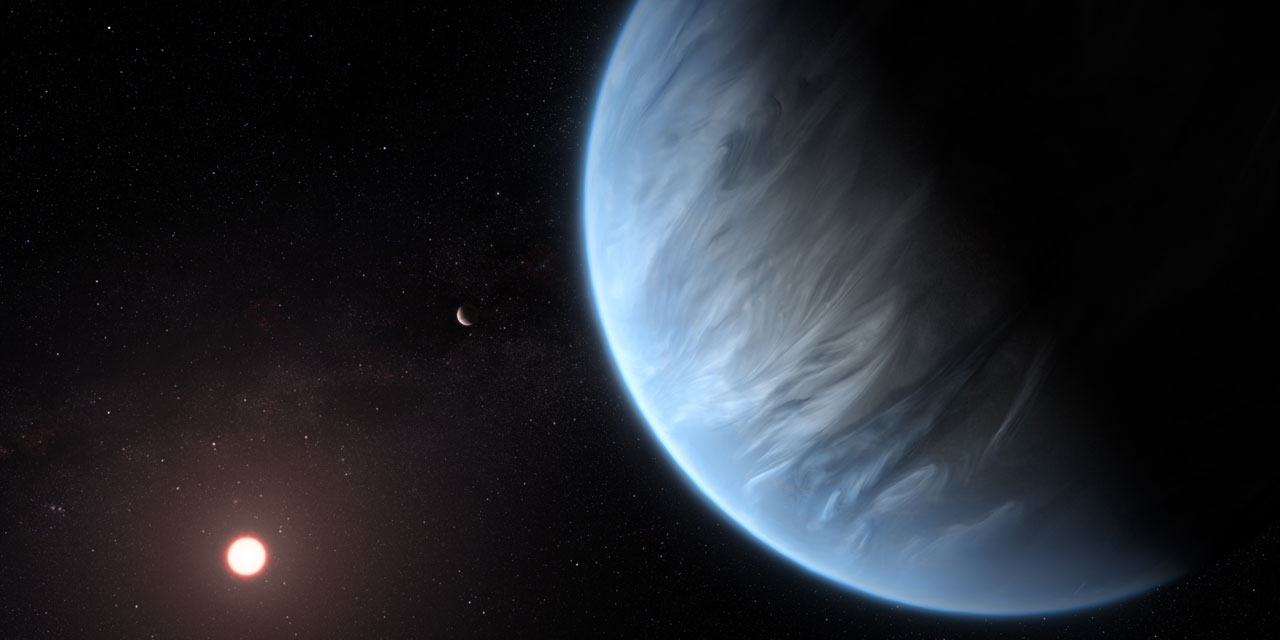An ocean of promise: astronomers have for the first time detected water vapor in the atmosphere of a planet located in the "habitable zone" of its star, a new stage in the search for signs of life beyond beyond the solar system.
"The planet has an atmosphere"
Of this rare pearl, "super interesting", astronomers still know little. But what they have discovered is very promising, and propels this very distant exoplanet, located more than a million billion kilometers from the Earth, to the rank of "best candidate" for the search for signs of extraterrestrial life. "Finding water in a potentially habitable world - other than Earth - is incredibly exciting (...) and it brings us closer to the answer to the fundamental question: Is the Earth unique?", Welcomes Angelos Tsiaras , University College London and co-author of the study published Wednesday in Nature Astronomy .
A planetary first! Researchers detected signs of water vapor in the atmosphere of a faraway planet in the "habitable zone," where liquid water could potentially pool.
Read about this fascinating world and the findings from @NASAHubble data: https://t.co/wQ6dtmAnl8pic.twitter.com/mlywWhJavC
"The observations of the Hubble Space Telescope have allowed us to discover that the planet has an atmosphere, and that the latter contains water vapor: two good news if we are interested in the habitability of the planet", explains to AFP Giovanna Tinetti, co-author of the study.
In the "habitable zone" of his star
From the data entered by Hubble in 2016 and 2017, researchers have developed algorithms to analyze the light filtered by the atmosphere of the planet. The results revealed the molecular signature of the water vapor, says a statement from University College London. "We can not deduce that there is liquid water on the surface of the exoplanet but I think it is highly possible," says the astrophysicist, also from University College London.
Moreover, the planet is located in the "habitable zone" of its star, that is to say neither too close nor too far from its source of heat, but just where the temperature allows the water to exist in the liquid state and where life, as we know it, could develop. A temperature quite similar to that of the Earth.
Discovered in 2015 by the American space telescope Kepler, the exoplanet, named K2-18b, orbits around the star K2-18, a red dwarf located in the constellation Lion, 110 light years from the solar system (one year light equals 9.460 billion km). Eight times more massive than our planet (it is a "super-earth" like all the exoplanets having a mass between 1 and 10 times that of the Earth) and 2 times larger, K2-18b is probably composed of silicates ( like the Earth, Mars and Venus) and ice.

